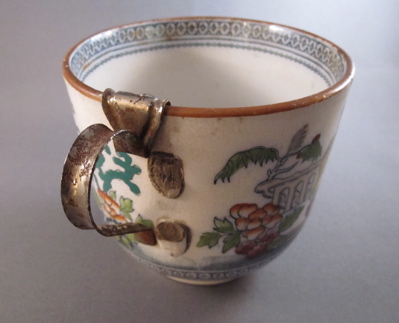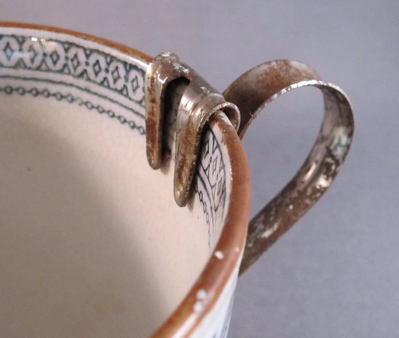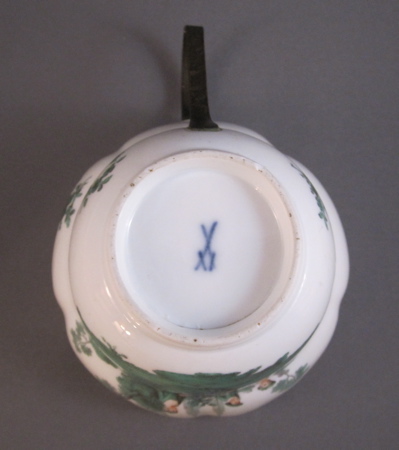Beautifully hand painted birds grace this pair of funnel shaped cabinet cups with loop handles, made in England by Royal Worcester in the third quarter of the 1800s. Each cup measures 2.75 inches high and 3.5 inches wide and each has its own inventive repairs. The finely painted decoration is attributed to John Hopewell.
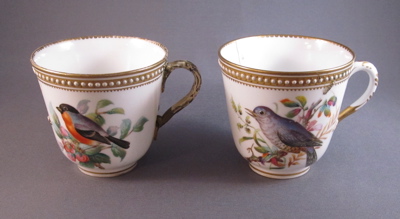
The cup on the left has a replaced metal handle, painted with white and gold enamel to match the original handle.
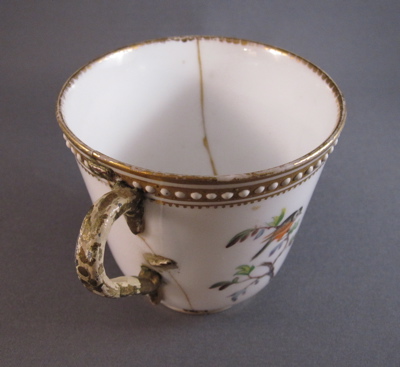
When the cup broke in half, it was riveted together with 6 tiny brass staples (the top one on the outside rim is now missing), also masked with white enamel.
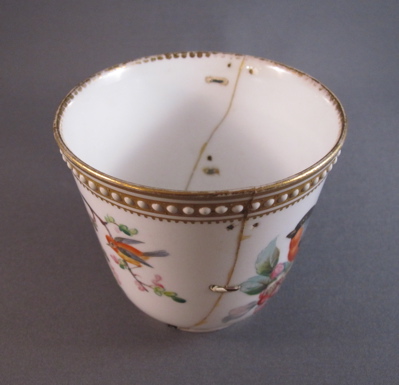
Small birds on branches are seen on the other side of the delicate cup.
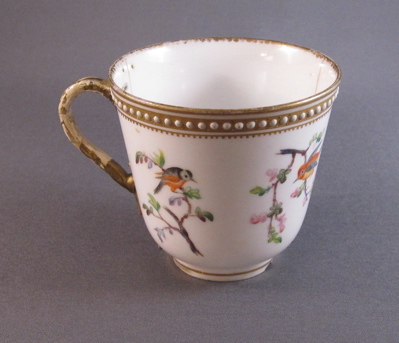
A close up of the fine hand painted bird with wonderful colors and detail.

The cup on the right has 5 brass staple repairs but maintains the original handle.
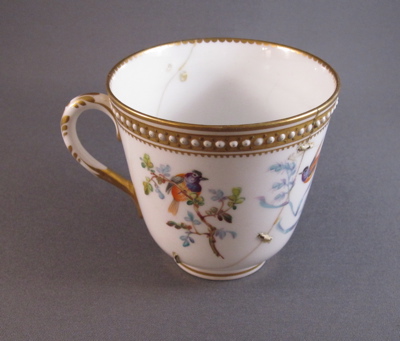
This is what the original handle on the other cup looked like before it was replaced.
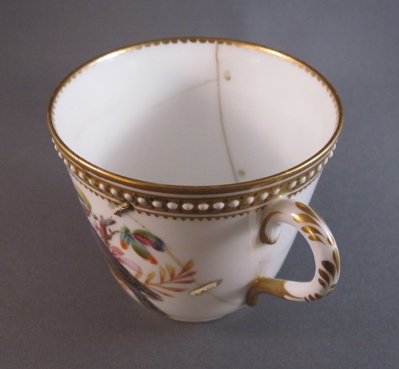
Another beautifully rendered bird in multicolor enamels.
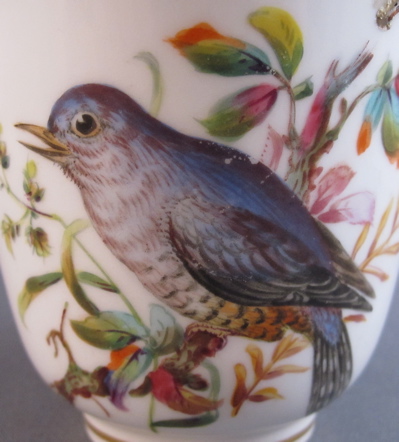
Marked in red on the underside ‘8292’ and ‘8292 R’











